Los Angeles
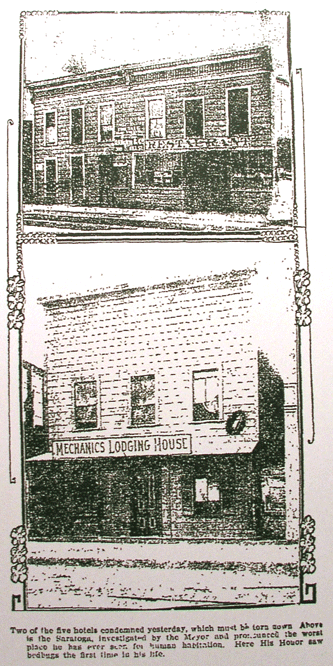
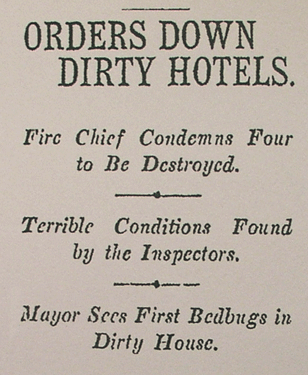 Much has been made of Bunker Hill, its rooming houses torn asunder, and of the wholesale postwar demolition of many a downtown landmark. Downtown hotels have fared the worst, though they limped along longest—the Lee, the Lankershim, the Gates, the Armondale, all held forth before being felled in recent memory. As much as we must blush at this collective ignominy, let us turn an eye back to some of our fallen comrades that predate, or were otherwise too shabby to be considered amongst, the brick and metal structures of our Gilded Age.
Much has been made of Bunker Hill, its rooming houses torn asunder, and of the wholesale postwar demolition of many a downtown landmark. Downtown hotels have fared the worst, though they limped along longest—the Lee, the Lankershim, the Gates, the Armondale, all held forth before being felled in recent memory. As much as we must blush at this collective ignominy, let us turn an eye back to some of our fallen comrades that predate, or were otherwise too shabby to be considered amongst, the brick and metal structures of our Gilded Age.
On this day in 1907 Fire Chief Lips, Health Officer Powers, Building Inspector Backus, with Mayor Harper at the helm, visited four downtown lodging houses and found the living conditions in them so deplorable that orders were issued for their immediate demolition. This action was largely at the behest of those tireless proponents of the “City Beautiful” movement, the Municipal Art Commission.
Like sleuths on the trail of flimsy firetraps unfit for human habitation (or, more likely, menaces to the business district), the Mayor and his posse struck first at the Saratoga, at 218-230 East Third Street. The Mayor, having never seen the common bedbug once in his life, was horrified at the sight of the Cimex lectularius. Harper had Building Inspector Backus draw up a letter to the building’s owner, one J. J. Pattison of Hollywood: “…I have reached the conclusion that it is my duty under Sec. 7 of the Los Angeles Building Ordinance to condemn…on account of its exceedingly flimsy character—the construction being mainly boards and the ceiling consisting of cloth and paper. The class of construction is, in my opinion, a very serious menace to the thickly built-up section surrounding the property. You will therefore demolish the building at once and remove all the old material from the premises. The section referred to requires that you begin this work within forty-eight hours of the receipt of this notice.”
Similar notices were sent to the owners of the Mechanics Lodging house at 232 East Second, the New England lodging house at 245 East Second, and the Nagaska Hotel on 2321/2 East Second. The Saratoga, Mechanics Lodging and New England were immediately vacated, their roomers dispersed who knows where; however, regarding the Nagaska, "the Japs have disregarded their notice and are still packed in there like sardines in a can. If they have not cleared out by Monday they may be transferred to the Police Station.”
While he was at it, Inspector Backus condemned the aged Pioneer Warehouse at 421 Bernardo, whose foundations have settled and whose brick walls are warped and cracked. Fire Chief Lips also pronounced an unnamed hotel on Spring, south of the Alexandria, to be an unsanitary firetrap.
It is said twenty other buildings within the business district have failed to meet the approval of the fire chief and building inspector. Their fate is of yet unknown.
This take-and-demolish method may be bad, but at least it’s more honorable than our modern methods practiced by that deceitful cabal of disingenuous philistines known as the LAUSD.







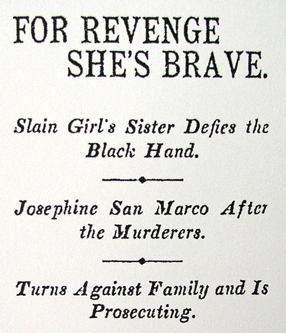

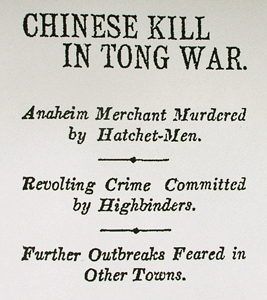


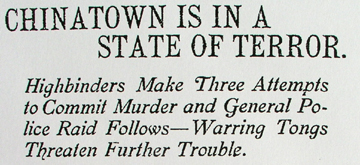
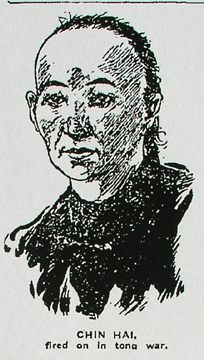
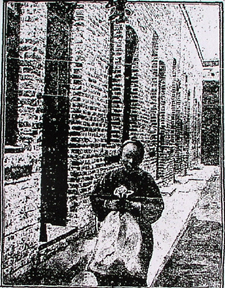 The young and fair Ling Auk, left, who had been friendly to the Bing Gon, was surprised by Hop Sing hatchetmen on June 19. Luckily, they were scared away by her protectors. The Hop Sing Tong has always been the most warlike in the Chinese settlement. They are centered at 529+1/2 North Los Angeles Street, where they have built a walled fortress replete with intricate tunnels that repeatedly prevent their capture. That White girls retire there to smoke opium is a sad, accepted fact of modernity.
The young and fair Ling Auk, left, who had been friendly to the Bing Gon, was surprised by Hop Sing hatchetmen on June 19. Luckily, they were scared away by her protectors. The Hop Sing Tong has always been the most warlike in the Chinese settlement. They are centered at 529+1/2 North Los Angeles Street, where they have built a walled fortress replete with intricate tunnels that repeatedly prevent their capture. That White girls retire there to smoke opium is a sad, accepted fact of modernity. 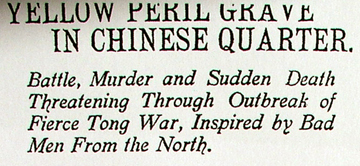
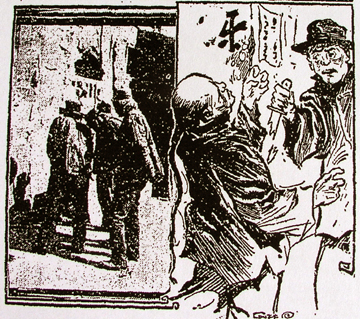
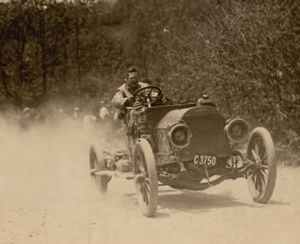
 The other day officers saw a man blazing down Pico in his autoed-mobile and gave chase for two miles. He was arrested, promised to show for court, and of course did not.
The other day officers saw a man blazing down Pico in his autoed-mobile and gave chase for two miles. He was arrested, promised to show for court, and of course did not.